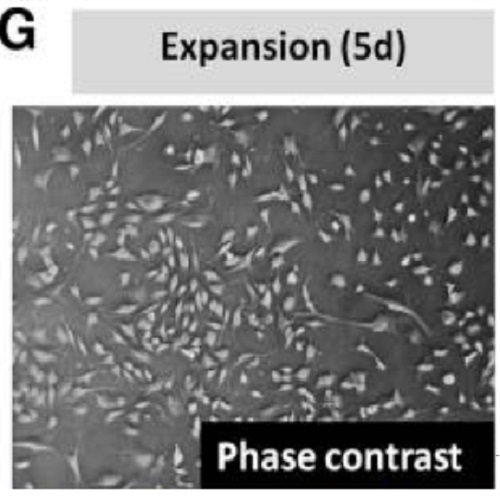A defined, controlled culture system for primary bovine chromaffin progenitors reveals novel biomarkers and modulators.
We present a method to efficiently culture primary chromaffin progenitors from the adult bovine adrenal medulla in a defined, serum-free monolayer system. Tissue is dissociated and plated for expansion under support by the mitogen basic fibroblast growth factor (bFGF). The cultures, although not homogenous, contain a subpopulation of cells expressing the neural stem cell marker Hes3 that also propagate. In addition, Hes3 is also expressed in the adult adrenal medulla from where the tissue is taken. Differentiation is induced by bFGF withdrawal and switching to Neurobasal medium containing B27. Following differentiation, Hes3 expression is lost, and cells acquire morphologies and biomarker expression patterns of chromaffin cells and dopaminergic neurons. We tested the effect of different treatments that we previously showed regulate Hes3 expression and cell number in cultures of fetal and adult rodent neural stem cells. Treatment of the cultures with a combination of Delta4, Angiopoietin2, and a Janus kinase inhibitor increases cell number during the expansion phase without significantly affecting catecholamine content levels. Treatment with cholera toxin does not significantly affect cell number but reduces the ratio of epinephrine to norepinephrine content and increases the dopamine content relative to total catecholamines. These data suggest that this defined culture system can be used for target identification in drug discovery programs and that the transcription factor Hes3 may serve as a new biomarker of putative adrenomedullary chromaffin progenitor cells.
Back to list
